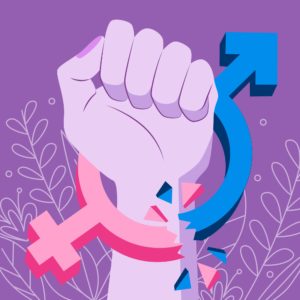The COVID-19 pandemic poses a significant challenge to all aspects of social life and to the advancement of the United Nations Sustainable Development Goals, especially SDG 3 “good health and wellbeing,” SDG 5 “gender equality,” and SDG 10 “reduced inequalities.” In a report published earlier in the year, the Inter-American Commission on Human Rights stated that respect for human rights must be at the heart of measures taken by states to contain the virus and address problems caused by the outbreak. It stressed that the pandemic could seriously affect the full exercise of an individual’s human rights due to the risks it poses to life, health and personal safety. As a result, the pandemic is likely to have immediate, medium and long-term impacts on societies as a whole, but particularly on vulnerable individuals and groups [1].
The current crisis prompts us to reflect on our vulnerable nature as humans and confront the precariousness of basic health care services in many societies. Despite a historical resonance to the idea of a pandemic—characterized by indiscriminate deaths and its tendency to throw economies into upheaval—possibly leveling social inequalities; the current outbreak is clearly producing the opposite effects [2]. Evidence [3,4,5] suggests that, instead of being conducive to a more egalitarian society, the coronavirus pandemic has widened existing gaps in societies. Moreover, it further reinforced dividing forces driven by ethnicities, social classes, genders, generations, and occupations—some can be accomplished remotely, and others need to be conducted in person.
The pandemic has further highlighted gender inequality issues. Women find themselves at the center of where SDGs 3, 5 and 10 intersect. Unequal distribution of household and care responsibilities is already common in many families worldwide. This means that even when women can afford to work from home, they need to adapt to the new reality of maintaining a work-life balance without professional care workers’ aid. For unemployed women, the new financial difficulties add a significant layer of emotional distress to these challenging times. To some women, mandatory confinement imposed by lockdowns also threatens their physical integrity. In many cases of domestic violence, women are trapped indoors with their abusers. As COVID-19 cases continue to strain healthcare systems, essential services such as domestic violence shelters and helplines have reached their full capacity [6], limiting women’s access to protection.
To deal with the emergency nature of the disease outbreak, financial and human resources are primarily mobilized to contain the spread of the virus. However, this strategy also compromises the provision of important routine services and disrupts access to healthcare for people with non-pandemic-related conditions. In July 2020, a report published by UN Women and the Gender and COVID-19 Working Group [7] outlined how the decisions made by national and local authorities and hospital managers on the management of the general public’ health events affect men and women differently. For instance, limited access to prenatal care, family planning, participation in childbirth, and abortion care disproportionally affect women. These limitations all prevent women from receiving quality sexual and reproductive healthcare services. COVID-19 also affects distribution of contraceptives. The supply chains are severely disrupted, and restrictions such as travel bans and workforce shortages reduce the supply of raw materials for production and distribution of short-term contraceptives.
On the other hand, as many women cannot visit healthcare providers due to confinement, the demand for contraceptives decreases. According to the UN Women report, barriers to accessing sexual and reproductive health services caused by a lack of knowledge of regulations, cost, availability or conscientious objection by healthcare providers during health emergencies are particularly evident for abortions. According to an article published by the social enterprise Safe2Choose [8], the provision of sexual and reproductive health services is not only essential for human rights in general but also for advancing SDG targets.
The UN specialized agencies, regional organizations, civil society organizations and experts acknowledged a heightened sense of awareness of human rights issues and class, race and gender disparities. The pandemic has unveiled a series of structural inequalities that we can no longer turn a blind eye to.
Sources:
